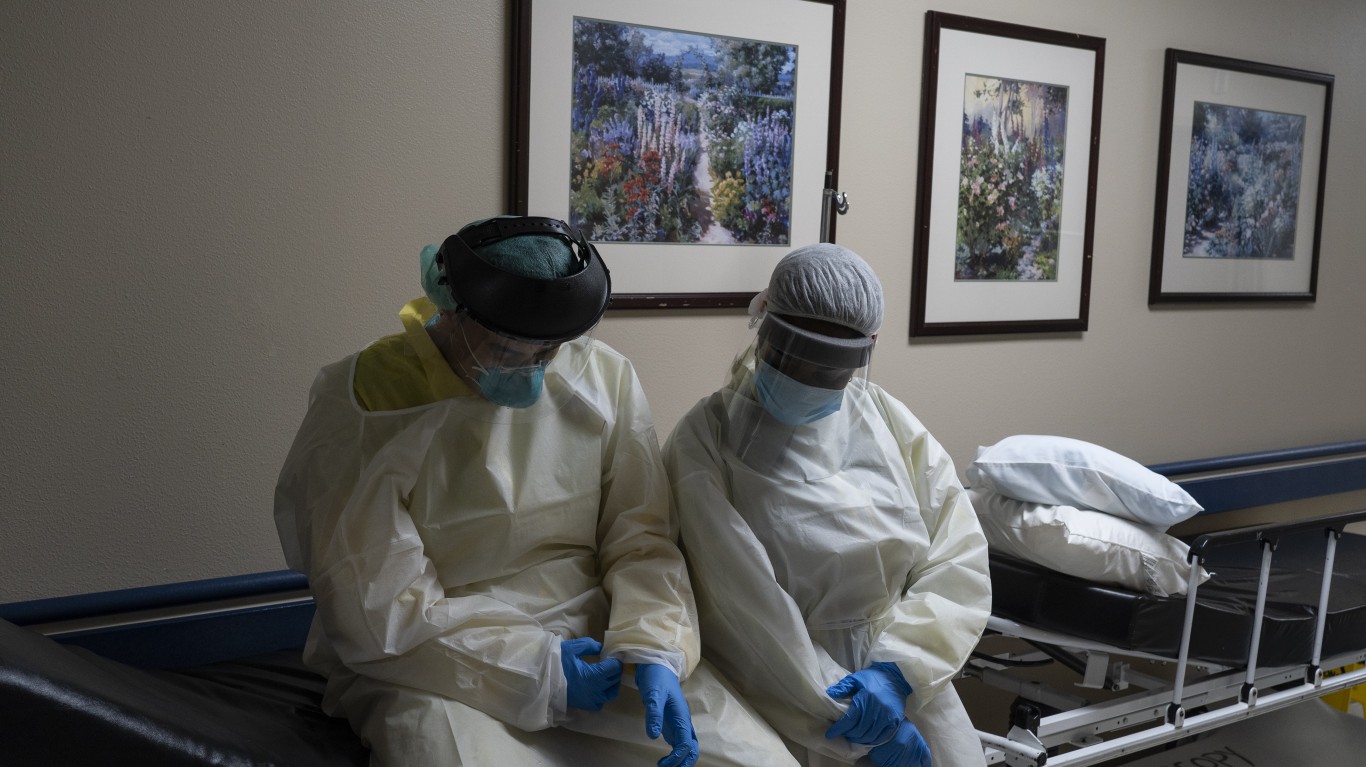Health and Healthcare
COVID-19: These Are the 5 Deadliest Counties in America

Published:

Despite a recent decline in the speed with which COVID-19 has spread across America, there is no end in sight for what will certainly be tens if not hundreds of thousands of more deaths in the first half of this year. Vaccination distribution has been slow, and mutations of the disease have spread to the United States from the United Kingdom, Brazil and South Africa. These may not be more deadly, but they almost certainly spread faster, and current vaccinations may not treat them. The jury remains out on these questions.
The traditional metrics for measurement of the COVID-19 spread remain primarily increases in confirmed cases and fatal cases by day. Confirmed cases number 26,791,783 in the United States and continue to rise by over 200,000 most days. Deaths are at 454,392 and rise by more than 4,000 on many days.
Other widely used measures are cases and deaths per 100,000 people. The advantage of this yardstick is that it allows for a comparison from place to place, regardless of how large or small a state or county is. By this measure, some regions are much safer than others and some more dangerous or deadly.
The deadliest county in America as of February 2 is Golden Valley County, Montana, where deaths per 100,000 based on a 14-day average were 19.73. Golden County is in the center of the state, northwest of Billings. It has a population of only 724, according to the U.S. Census Bureau. Over 90% of the population is white. It is far from affluent. The median price of a family-owned home is $106,100, less than half the national average. At $43,875, the median household income is also well below the national number. The 20% poverty rate is high.
The next deadliest county is Bath County, Virginia. It is in the western part of the state, close to Roanoke. Deaths per 100,000 there, based on a 14-day average, are 13.01. Its population is 4,393.
Aurora County, South Dakota, follows with a death rate per 100,000 of 12.94. It has a population of 2,759. Then comes Thomas, Nebraska, with a rate of 11.07. It has a population of 645. Next, McMullen, Texas, has a death rate per 100,000 of 10.79 and a population of 662.
Cumulative cases per 100,000 over a 14-day average is another means to measure the dangerous spread of the disease.
Forest County, Pennsylvania, leads the nation’s list as measured by case on this basis at 588.84. Forest County has a population of 7,313, according to the U.S. Census, spread across 427 square miles, so it is sparsely populated. Part of it sits in the Alleghany National Forest, southeast of Erie, Pennsylvania. At $37,717, its median household income is about two-thirds of the national average. Over 18% of the population lives below the poverty line, which approaches double the national number. About 67% of the population is white and 25% is Black.
Next on the list of counties based on confirmed cases per 100,000 are three counties in Kansas. The figure is 525.55 in Wilson County, Kansas, which has a population of 8,780. The figure in Thomas County, Kansas, is 486.60. Its population is 7,824. It is followed by Marshall County, Kansas, at 379.82 and with a population of 9,798.
Fifth on the list among U.S. counties based on cases per 100,000 is Calwell County, Texas, with a figure of 366.45. It is relatively large by population compared to other counties on this list with 41,401 residents.
While the fairly recent news about COVID-19 is that it has hit cities like Los Angeles with a vengeance, it remains a rural problem also. The spread has slowed from a month ago in low-population areas like North and South Dakota, but many of America’s less populated areas are still in trouble.
Credit card companies are at war, handing out free rewards and benefits to win the best customers. A good cash back card can be worth thousands of dollars a year in free money, not to mention other perks like travel, insurance, and access to fancy lounges. See our top picks for the best credit cards today. You won’t want to miss some of these offers.
Flywheel Publishing has partnered with CardRatings for our coverage of credit card products. Flywheel Publishing and CardRatings may receive a commission from card issuers.
Thank you for reading! Have some feedback for us?
Contact the 24/7 Wall St. editorial team.